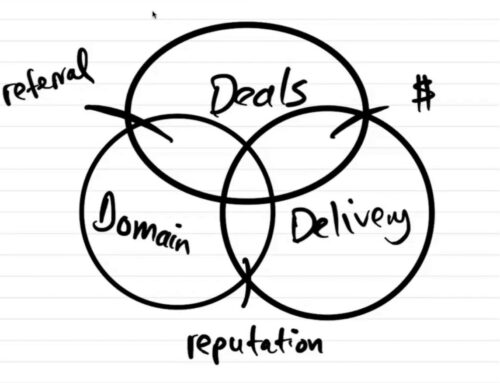Ep.115 CTO’ing Mission through Pandemic Lockdowns
Are you a technology professional looking to connect with like minded people?
We have a thriving community of CTOs discussing these episodes and more.
Click HERE to set up a call and learn more about becoming a member.
About The Speaker:
 Jonathan LaCour, CTO of Mission. Mission is an AWS partner providing DevOps services and my go to friends for infrastructure questions.
Jonathan LaCour, CTO of Mission. Mission is an AWS partner providing DevOps services and my go to friends for infrastructure questions.
Episode Resources:
Check out https://7ctos.com/
Episode Transcription:
Nickolai Walker: [00:00:13] Welcome back to the studio. I, of course, am your host, Nickolai Walker. I am on the mic and in your ear, which is where I love to be. Today, we’re going to be chatting with Jonathan Lacour, who is the CTO of Mission. Mission is in AWS partner that provides dev op services. And AWS does not stand for awesome. Or maybe it should in this case. It stands for Amazon Web Service. They’re also a go-to for infrastructure questions, so hit them up with all that you have. So today we’re going to be talking to Jonathan and I want him to start off the conversation by telling us how things are going at Mission. Jonathan?
Jonathan LaCour: [00:00:46] You know, I will say this. As with most people, things have not gone to plan for Mission, right? However, I think we’ve had a really great year in many respects. It required us to do some very quick pivoting to kind of adapt to the changes that were going on in the universe. But we’re having a record year and growing very, very quickly and doing fantastically as a business. So I cannot complain. I am definitely being kept very busy. Well, one of the critical things is, as CTO, when I joined, I made sure that I owned the product function at Mission. And to me that is one of my favorite parts, like I am a technologist, but I’m really very much a product person at heart. And when you’re adapting to changes in the market, there is no better place to be than knee deep in product, right? And we did some really great work on that front. We put out some programs that are all about cost saving initiatives for companies on us. And we have been growing like mad on that. It just took some quick innovation.
Etienne de Bruin: [00:01:58] So a typical product then would be a tool to help calculate cost and reduce that?
Jonathan LaCour: [00:02:07] So we are kind of a technology enabled services business. And so our products are mostly a combination of people and tools and processes. And so we’re partnered with some great vendors who do the tooling part usually. And the magic from Mission really comes around we are experts at implementing those things, providing insights and providing services around it. And so we use, for example, these CloudHealth for our cloud management platform, which is a fantastic tool, sort of like cost explorer on steroids, you know, the AWS cost explorer. And then we have, you know, cloud analysts that actually meet with our customers on a regular basis. They go through all the recommendations. Put out customer reports and all sorts of good stuff. So it’s that magical combination of, you know, we know what we’re doing. We’ve got a great team of people who are experts on all these tools in the cloud platforms and then putting it all together so that companies don’t have to do that themselves. As a CTO, that’s like one of my biggest obstacles always is getting my teams trained up on tools, getting to be experts in any particular piece of technology. So that’s really resonated with other CTOs I’ve talked to is, hey, we’re a shortcut for you.
Etienne de Bruin: [00:03:17] Yeah, so I recently took a CTO gig and one of the first brick walls I faced was the infrastructure. Mostly because the infrastructure seems to be held up in either one person’s brain or, you know, or its sort of become this mutant that people have slapped things onto to facilitate growth. But the rhyme or reason as to sort of this thing that you just keep building, it’s like a raft. It’s like a raft with barrels and pieces of wood and just a messy, ugly, horrible thing as you sail into this beautiful lake.
Jonathan LaCour: [00:04:02] If you thought technical debt was easy to get into when you had to order servers and rack them and stack them and provision them, just imagine what technical debt can turn into when you can, literally, with an API call, provision new infrastructure. And you’re right. That’s what happens is people just go about their day solving their problems and they’re not thinking, at a big level strategically, what’s going on. You know, am I going to be on budget here? Is this the right way to be doing this? And then nobody ever revisits it either. It’s just sort of like, OK, problem solved, check, move on. And yeah, it’s exhausting.
Etienne de Bruin: [00:04:54] At Mission, do companies need to be a certain size before they can or should be using a dev ops as a service or should dev ops, as a service company, try to get in as early as possible, as cheap as possible, so that you can grow with a company.
Jonathan LaCour: [00:05:15] You know, I would say that there’s not like a hard and fast rule on this, but I think.. So for context, we do work with a lot of startups who have very small teams and we’re really providing their trusted advisory kind of dev op services for them. And we represent maybe the majority of, or all of, their team. But we work with other customers who are big enterprises, who have, you know, massive teams, and they’re leaning on our expertise less than our effort. So it really depends where you are on the lifecycle. I would say it usually doesn’t come down to size of company. It comes down to budget. I think any company would benefit from partnering with an expert from a dev ops perspective, especially if you don’t have enough capacity in-house, which every single time I talk to a company about. Do you have enough great dev ops talent available in a house? And they’re always like, no. Never. It’s never there. So to me, if you can afford it, it’s worth doing. And I think the other key thing is it’s really hard to retain good talent right now. People talk about the market in 2020 and with Covid and what’s happening. Honestly, Dev ops people are in hot demand still. There were some corrections earlier in the year, but at this point it still remains an extremely hot market and very difficult to retain people. So we kind of represent a way to de-risk a little bit. It’s like, I have three people internally or five people internally. You know I can lose one or two of them and I still have Mission at the ready and they’ve got a big team. They can always bring in more resources if needed.
Etienne de Bruin: [00:06:48] So what would you tell the CTO or the startup that has zero dev ops people but is clearly staging and pushing to production in some cloud, but they don’t have anyone. There’s no dev ops department.
Jonathan LaCour: [00:07:08] Well, typically in that circumstance, I feel like a SaaS business in that model. You’re a little startup. You’re building on an application. Your developers effectively are your dev ops team. It’s not like the work isn’t getting done. It’s just maybe not getting done by people who that’s really what they do. And so, I would say unless you have someone at least watching what’s going on, there is a good chance that you’re digging yourself some holes that you’re going to pay for later. So you don’t have to go full on into a situation where you’re engaging with a company like Mission to kind of run your dev ops for you. But you could start out with just some advisory service. Just come in and, you know, do some assessments, tell me where I’m headed and what I need, and then make a decision from there. But I think I’ve been in that situation before at a very small startup. You’re really focused on solving the customer problem, not solving my own internal issues and really, you know, automation and things like that. But it really quickly will transition. And if your product becomes successful, you don’t want to have to slow down. That’s the worst possible thing to do, when you’re just releasing product to market, to have to slow down and stop. You know, you want to ride that as much as possible. And if you don’t have all of the skids greased, as they say. You’re going to just have all that friction and it’s going to hold you back. So it does cost money, but I think it’s totally worth it. You need to have a strategy in place and you need to have a plan. You don’t have to be fully staffed up, but you do need to know what your blueprint is like. What is my plan and strategy here.
Etienne de Bruin: [00:08:49] It’s ironic for me that there’s a reluctance to budget for it because I think there’s a perception that it’s just something that maybe it’s hard for people to visualize what the money is being spent on. But I think you and I know that this is a brilliant virtualization of something that used to require tremendous effort to provision. But I think with that ease, it comes across as something that shouldn’t be paid for or shouldn’t be budgeted for. It’s strange.
Jonathan LaCour: [00:09:28] It is strange, but it makes a lot of sense when you think about how companies tend to make decisions. They’re thinking about what problems are right in front of them. And, you know, usually they’re thinking about ‘I want to make sure that I’m building the right product.’ And so there’s generally less reluctance to invest in things like engineering, around development and design and product and things of that notion. But when you get to operations, it’s sort of like putting a new roof on your house, right? It’s like, oh, I don’t really want to do this. But then the day when rain starts to fall down on you, that’s when you’re like, well now I need a roof. And it’s like, yeah, but it’s too, its not too late, but everything becomes much more difficult now. And we talked earlier about how Mission had to do a big pivot earlier in the year. And every company has to go through these kinds of things, doing big pivots and making rapid change based upon evolving markets and new things going on in the world requires you to be able to turn on a dime. And if you have no dev ops, if you have no strategy there and you don’t have the ability to have automation and monitoring and you don’t have a good bead on that, it’s going to be a lot harder to turn on a dime. And so to me, it’s an investment in your own agility. In your own ability to pivot quickly and make the changes necessary to not only survive during times like this, but to really have a record year like Mission is.
Etienne de Bruin: [00:10:46] To prepare companies then, you need someone like a professional or like an expert, like a CTO to prepare the company for that type of experience and projecting out that expense. Is that who you work with is CTOs?
Jonathan LaCour: [00:11:04] It depends on the company. Frequently it is the CTO. Very frequently. Occasionally it’ll be somebody who kind of reports into the CTO or maybe the chief operations officer or the CIO, kind of depending on the engagement. But we usually work with whoever runs the dev ops team and the infrastructure team or engineering team at our customer. That’s who our point of contact tends to be.
Nickolai Walker: [00:11:35] Thanks again for joining us here in the studio, and thank you to Jonathan LaCour, who is the CTO at Mission. Now, if you would not mind, do a few things, please. A bit of housekeeping always does a body good. Please go check out 7CTOs.com. Also subscribe to the podcast in iTunes so you can get it every single time its fresh and available to keep me on this mic and in your ear. And also go check out missioncloud.com. We will see you next time with another interview with Jonathan LaCour.
Share This Story, Choose Your Platform!
Related Podcasts




